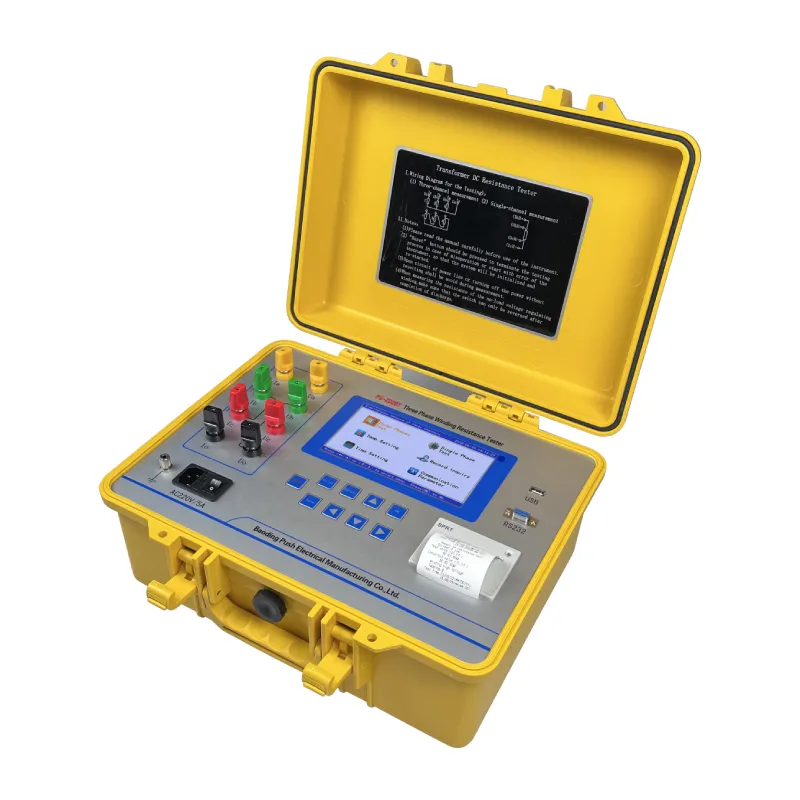 English
English


Testing Equipment for Relay Systems in Electrical Applications
Understanding Relay Test Equipment Ensuring Reliability in Electrical Systems
Relay test equipment plays a crucial role in the maintenance and reliability of electrical systems. As relays are essential components in various applications, including power generation, transmission, and distribution, their proper functioning is vital to the safety and efficiency of electrical networks. This article delves into the significance of relay test equipment, its types, and best practices for its effective use.
What is Relay Test Equipment?
Relay test equipment refers to a range of devices designed to evaluate the performance and functionality of relays. These tools are used to simulate operating conditions, allowing technicians to assess the relay's response to various inputs. The primary goal is to ensure that relays operate correctly under specified conditions and that any potential faults are identified before they lead to system failures.
Types of Relay Test Equipment
There are several types of relay test equipment, each serving specific purposes
1. Digital Relay Testers Modern digital testers are versatile machines capable of testing electromechanical and solid-state relays. They offer advanced features such as programmable test sequences, automated testing procedures, and comprehensive data logging. This type of equipment provides accurate and reproducible results, making it suitable for both field and laboratory settings.
2. Analog Relay Testers While digital testers are more common today, analog relay testers are still in use, especially in older systems. These devices typically use analog signals to check the operation of the relays. They can effectively test simple relays but may lack the advanced features found in digital testers.
3. Time Measurement Equipment This includes devices specifically designed to measure the timing characteristics of relays, such as pick-up time, drop-out time, and operating time. Accurate timing measurements are critical for applications where precise coordination among protective devices is required.
Importance of Relay Testing
Regular testing of relays is crucial for a myriad of reasons
relay test equipment

- Safety Faulty relays can lead to hazardous conditions, including electrical fires or equipment damage. By routinely testing relays, potential issues can be addressed before they create safety risks.
- System Reliability Electrical systems rely on the rapid and accurate operation of relays to protect equipment from overloads and faults. Regular testing ensures that relays will function as intended, contributing to the overall reliability of the system.
- Cost Efficiency Preventative maintenance, including relay testing, can save organizations significant repair and replacement costs in the long run. By identifying weaknesses in relay performance early, companies can avoid more extensive and expensive damage to equipment.
Best Practices for Using Relay Test Equipment
To maximize the effectiveness of relay test equipment, consider the following best practices
1. Training and Certification Ensure that personnel operating relay test equipment are adequately trained and certified. Proper knowledge of equipment and testing procedures is essential for accurate results.
2. Regular Calibration Keep the relay test equipment calibrated regularly. Accurate calibration ensures that tests are reliable and results are valid.
3. Documentation Maintain thorough records of all relay tests performed, including conditions, results, and any corrective actions taken. Documentation aids in future maintenance and compliance with industry standards.
4. Scheduled Testing Implement a regular testing schedule based on manufacturer recommendations and industry standards. Consistency is key to maintaining relay performance over time.
In conclusion, relay test equipment is indispensable for ensuring the reliability and safety of electrical systems. By understanding the types of equipment available and adhering to best practices, organizations can protect their investments, enhance system performance, and maintain a safe working environment.
-
Differences between open cup flash point tester and closed cup flash point testerNewsOct.31,2024
-
The Reliable Load Tap ChangerNewsOct.23,2024
-
The Essential Guide to Hipot TestersNewsOct.23,2024
-
The Digital Insulation TesterNewsOct.23,2024
-
The Best Earth Loop Impedance Tester for SaleNewsOct.23,2024
-
Tan Delta Tester--The Essential Tool for Electrical Insulation TestingNewsOct.23,2024





